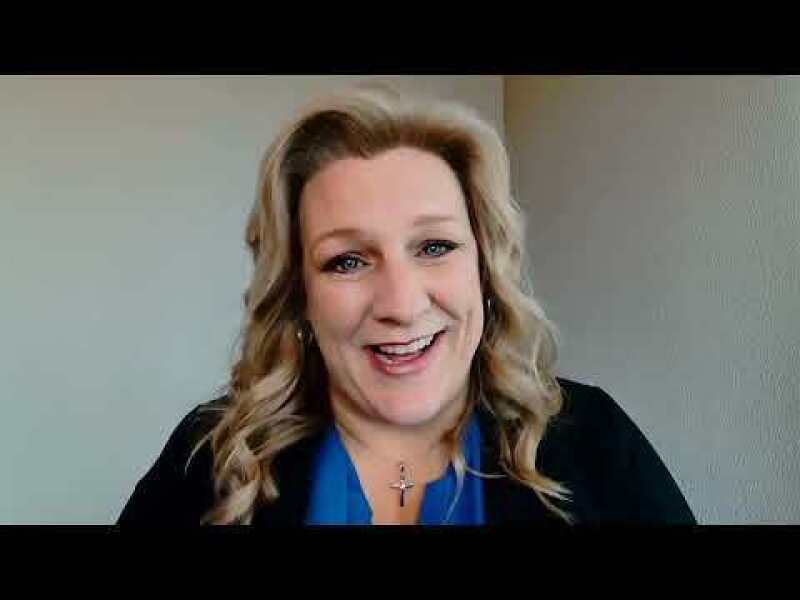Consider all the factors that can affect a person’s health. Housing, transportation, economic status and cultural background all play a part, as do age, race, and health insurance status (in the United States especially). Reflecting those multifaceted influences, the Public Health Nursing Section of the American Public Health Association (APHA) defines public health nursing as “the practice of promoting and protecting the health of populations using knowledge from nursing, social, and public health sciences.”1 Public health nursing is an all-encompassing field affected by human and natural events alike. While the COVID-19 pandemic taught us that some things are unpredictable, the future of public health nursing is generally predicated on developments and trends in technology, science, politics or society’s shifts and popular culture.
Ongoing public health challenges
The nursing workforce, as the largest healthcare profession and with nearly four times the number of nurses compared to physicians,2 often has longer and more frequent contact with patients. This high-visibility contact in all settings, combined with the strength of nurse leadership in public health, sets up nurses to be directly engaged with some of the biggest debates and issues in American society. The following issues have been in the spotlight and as ongoing issues are illustrative of the types of struggles that can be anticipated in the future of public health.
Harm reduction efforts
Harm reduction efforts are a central pillar of many community health efforts to quell substance use disorders and improve treatment. Harm reduction is also tied to issues like mental health, substance misuse, and the opioid epidemic. It’s also a great example of the types of challenges faced when introducing new tactics.
The Substance Abuse and Mental Health Services Administration (SAMHSA) describes harm reduction as, “an approach that emphasizes engaging directly with people who use drugs to prevent overdose and infectious disease transmission, improve the physical, mental, and social wellbeing of those served, and offer low-threshold options for accessing substance use disorder treatment and other health care services.”3 One such harm reduction effort is the increase of access to and use of naloxone, an overdose-reversing nasal spray.
In March 2023, the Food and Drug Administration approved Narcan, a brand name version, for over-the-counter (OTC), non-prescription sale. Naloxone rapidly reverses the effects of an opioid overdose, including in situations where fentanyl is involved. Making the drug available over-the-counter will ideally increase its prevalence among drug users and non-users alike to act in the case of an overdose and save lives in the face of rising opioid and drug misuse.4 Challenges remain, however, when it comes to access. Price of the drug and timeline for the release are dependent on the manufacturer, Emergent BioSolutions. As of April 2023, the company says it plans to charge $50 for two doses but addiction specialists argue that’s still prohibitive considering many people with opioid addiction live well below the federal poverty line. There’s also concern regarding whether insurance will cover the OTC version.5
Another method of harm reduction is Syringe Services Programs (SSPs), which provide syringe distribution and disposal options for persons who inject drugs (PWID). According to the Center for Disease Control (CDC), SSPs are associated with an estimated 50% reduction in HIV and hepatitis C virus incidence.6 In some jurisdictions, PWID can access sterile needles and syringes and other injection paraphernalia through SSPs and through pharmacies without a prescription. The CDC also explains that SSPs can serve as a bridge to other health services like testing for HIV and HCV, access to HIV pre-exposure prophylaxis (PrEP), and more. Some SSPs also offer training for the usage of naloxone and can provide the spray as well.6
Harm reduction efforts such as these contribute to the accomplishment of many public health goals like preventing transmission of blood-borne infections, reducing and stopping substance use, preventing overdose deaths, and increasing HIV/STD treatment initiation and retention.6 However, SSPs face similar challenges to homeless shelters and methadone clinics in that they often make local officials and community members wary with assumptions that they will attract crime, litter, and “unsavory” characters to these neighborhoods. Some towns attempt to bar the programs using zoning laws and claims about threats to public safety fueled by stigma and misinformation.7 Studies show that people who go to syringe programs are five times more likely to enter treatment.8 They also have not been shown to increase rates of crime in the neighborhoods in which they’re introduced,9 and do in fact reduce existing syringe litter in the distribution area.10
Debate over public health authority
Years after the onset of the COVID-19 pandemic, we’re still seeing the aftereffects of decisions made during the months of crisis. One major issue during the span of the pandemic from onset to vaccine rollout, was the question of where public health authority lies. When it comes to day-to-day public health needs, state and local agencies are entrusted with the power to make decisions that will be best for their communities. However, with the increase in regulations during the pandemic concerning things like mask-wearing and vaccination, debate has sprung up around whether some of the decisions should be left to elected officials like members of Congress, state legislatures, and other locally elected bodies.11
The Robert Wood Johnson Foundation (RWJF), which supports the power of local agencies staffed by experts to make public health decisions, puts it this way:11
But just as you wouldn’t ask a politician to step in for a firefighter and put out a fire, it does not make sense for a politician to take over for a public health official and contain an outbreak. Public health is best served when decisions are driven by expertise, experience and evidence, and when public health officials demonstrate transparency and accountability.
Several bills to limit health department authority regarding the vaccine requirement for school attendance have already been proposed in Indiana, Missouri, and Texas. There have also been an unprecedented number of lawsuits filed challenging public health orders in the couple years following the pandemic. These issues are unlikely to dissipate soon but court decisions could impact further legislation.10
The future of public health nursing
There are countless worthy public health issues that require the public’s attention but many of them can be defined by the same struggles over power, politics and science. However, advances in technology and data science are primed to improve the field. Nurses, as they often do, will get a first-row seat to these battles pitting change and innovation against regulation and legislation. As an ell-encompassing goal of achieving health equity proceeds, the following topics are likely to come into focus.
Climate change
According to the World Health Organization, climate change is the single biggest health threat facing humanity.12 Small changes in climate can have enormous health impacts as they affect all the environmental determinants of health: clean air, safe drinking water, sufficient food and secure shelter. Between 2030 and 2050, climate change is expected to cause approximately 250 000 additional deaths per year, from malnutrition, malaria, diarrhea and heat stress. Reducing air pollution through better transportation, food, and energy uses can also have a positive effect on health.12
Gun violence
Each year, more than 39,000 people in the United States die as a result of gun violence, and tens of thousands more suffer non-fatal gun injuries. In addition, gun violence costs the U.S. $280 billion annually. The societal costs of firearm assault injury include work loss, medical/mental health care, emergency transportation, police/criminal justice activities, insurance claims processing, employer costs and decreased quality of life.13
According to the APHA, gun violence can be prevented through a comprehensive public health approach:13
A public health approach to preventing gun violence recognizes that violence is contagious and can become epidemic within a society.7,8 Primary prevention involves the use of core public health activities to interrupt the transmission of violence: (1) conducting surveillance to track gun-related deaths and injuries, gain insight into the causes of gun violence and assess the impact of interventions; (2) identifying risk factors associated with gun violence (e.g., poverty and depression) and resilience or protective factors that guard against gun violence (e.g., youth access to trusted adults); (3) developing, implementing and evaluating interventions to reduce risk factors and build resilience; and (4) institutionalizing successful prevention strategies.
Health coverage and care for immigrants
Rising health care costs are a major worry of Americans. Nine in ten (91%) Americans say they are concerned about increases in health care costs for individuals, and nearly half (48%) say they are very worried about increases in health care costs for the nation as a whole.14 For lawfully present and undocumented immigrants alike, considered “noncitizens,” costs can also be prohibitive. Additionally, this group is more likely to be uninsured and face higher barriers to access care. Efforts need to be made, with a focus on cultural competency, to connect with these communities to improve the health and well-being of immigrant families.15
Youth access to mental health and gender affirming care
Governmental administrative agencies across the country are passing laws or otherwise attempting to restrict youth from accessing gender-affirming care (i.e. age-appropriate care that is medically necessary for the wellbeing of transgender and non-binary people who experience symptoms of gender dysphoria, or distress that results from having one’s gender identity not match their sex assigned at birth). This care, which is supported by every major medical association representing over 1.3 million U.S. doctors, is critical to the mental health of these children. Further, many of the states moving to ban this care have provisions to do the same for adults.16
Be at the forefront of public health progress and innovation
Public health nurses have a big job to do, made more imperative by the constant fluctuation of political and social issues affecting the field. As the APHA Public Health Nursing Section describes, “Evidence and data drive the practice of public health nurses, who translate knowledge from the health and social sciences to individuals and population groups through direct care, programs and advocacy.” If you’re eager to make a wide-ranging contribution and even bigger impact, consider a career in public health. A Master of Science in Nursing degree with a specialization in Community-Based Public Health will thoroughly prepare you to take on the field with confidence.
- American Public Health Association, Public Health Nursing Section (2013). The definition and practice of public health nursing: A statement of the public health nursing section. Washington, DC: American Public Health Association. Accessed on on May 4, 2023 from: apha.org/~/media/files/pdf/membergroups/phn/nursingdefinition.ashx
- National Academies of Sciences, Engineering, and Medicine; National Academy of Medicine; Committee on the Future of Nursing 2020–2030; Flaubert JL, Le Menestrel S, Williams DR, et al., editors. The Future of Nursing 2020-2030: Charting a Path to Achieve Health Equity. Washington (DC): National Academies Press (US); 2021 May 11. 3, The Nursing Workforce. Accessed on May 8, 2023, from ncbi.nlm.nih.gov/books/NBK573922/
- Retrieved on May 4, 2023, from samhsa.gov/find-help/harm-reduction
- Retrieved on May 4, 2023, from cbsnews.com/news/narcan-approved-over-the-counter-sale-fda/
- Retrieved on May 8, 2023, from nbcnews.com/health/health-news/over-counter-narcan-cost-opioid-overdose-drug-rcna80665
- Retrieved on May 4, 2023, from cdc.gov/hiv/effective-interventions/prevent/syringe-services-programs/index.html
- Retrieved on May 4, 2023, from harvardpublichealth.org/health-policy-management/towns-are-going-after-syringe-services/
- Retrieved on May 4, 2023, from cdc.gov/mmwr/preview/mmwrhtml/mm6448a3.htm
- Marx, M. A., Crape, B., Brookmeyer, R. S., Junge, B., Latkin, C., Vlahov, D., & Strathdee, S. A. (2000). Trends in crime and the introduction of a needle exchange program. American journal of public health, 90(12), 1933–1936. https://doi.org/10.2105/ajph.90.12.1933
- Doherty, M. C., Junge, B., Rathouz, P., Garfein, R. S., Riley, E., & Vlahov, D. (2000). The effect of a needle exchange program on numbers of discarded needles: a 2-year follow-up. American journal of public health, 90(6), 936–939. https://doi.org/10.2105/ajph.90.6.936
- Retrieved on May 3, 2023, from rwjf.org/en/insights/blog/2023/02/the-future-of-public-health-three-things-to-watch-for-in-2023.html
- Retrieved on May 8, 2023, from who.int/news-room/fact-sheets/detail/climate-change-and-health
- Retrieved on May 8, 2023, from apha.org/-/media/Files/PDF/factsheets/200221_Gun_Violence_Fact_Sheet.ashx
- Retrieved on May 3, 2023, from kff.org/health-costs/poll-finding/kff-health-tracking-poll-december-2022/
- Retrieved on May 8, 2023, from kff.org/racial-equity-and-health-policy/fact-sheet/health-coverage-and-care-of-immigrants/
- Retrieved on May 8, 2023, from hrc.org/resources/get-the-facts-on-gender-affirming-care
- Retrieved on May 8, 2023, from apha.org/apha-communities/member-sections/public-health-nursing/who-we-are





